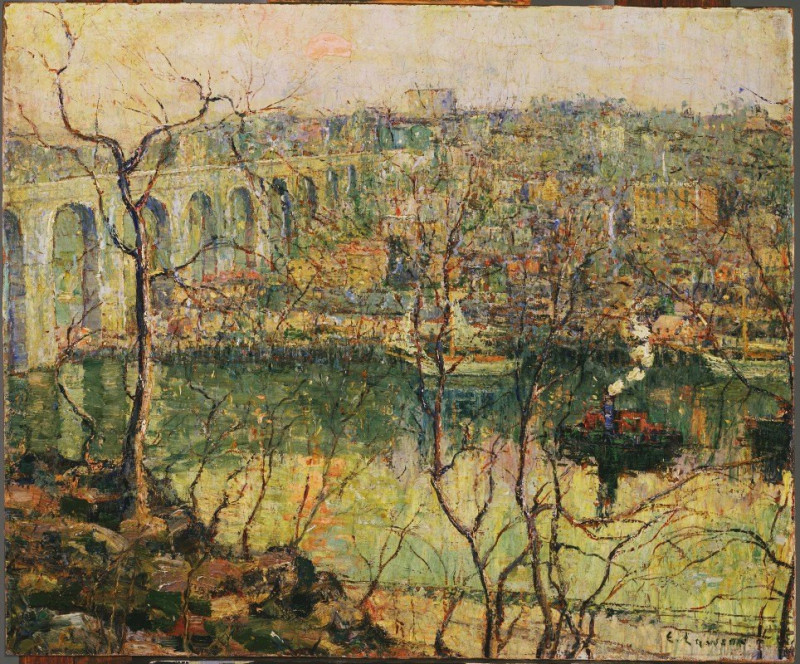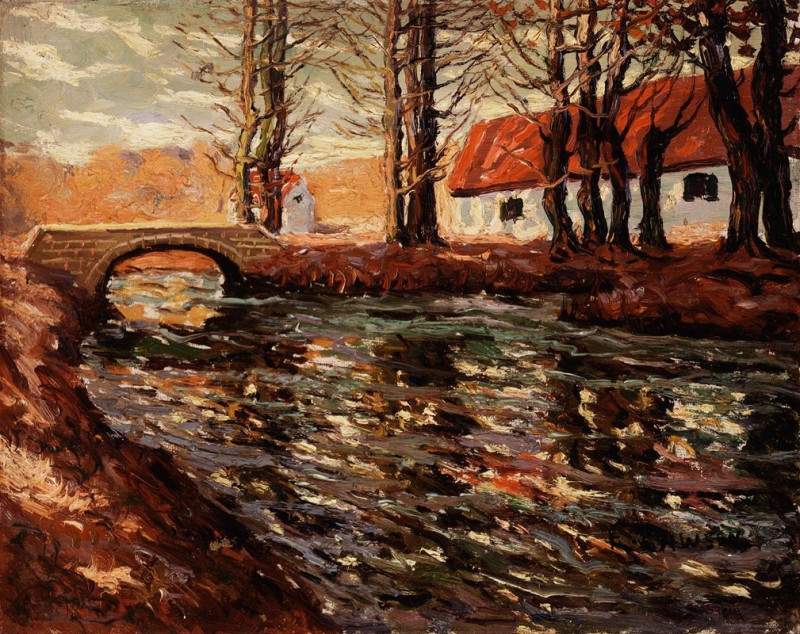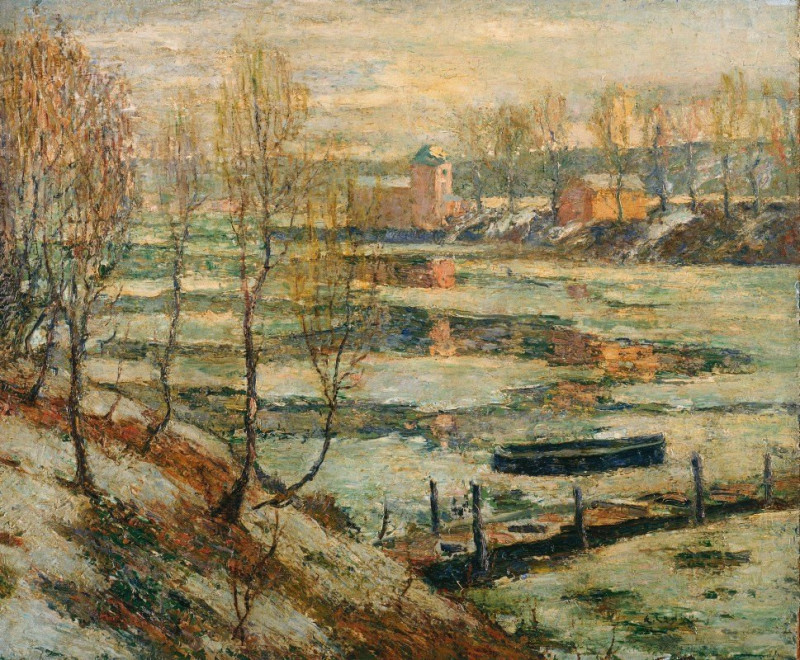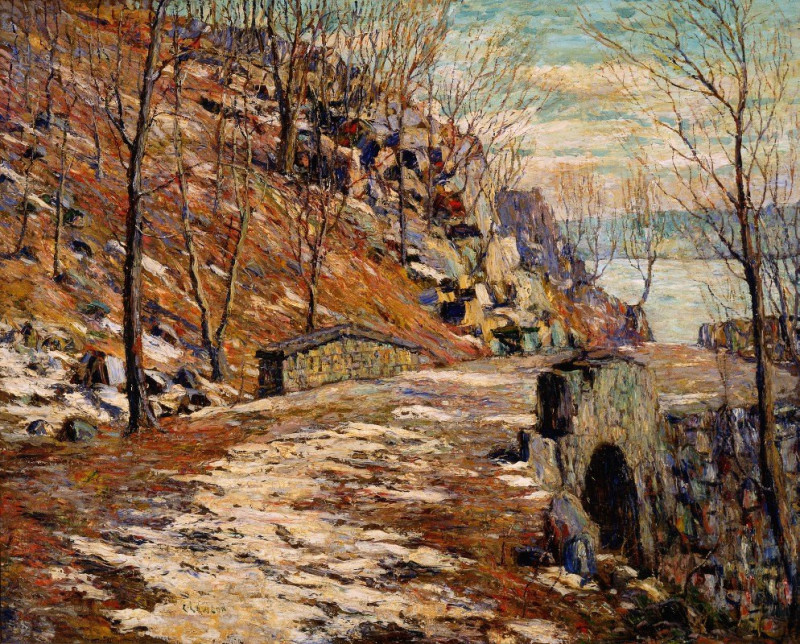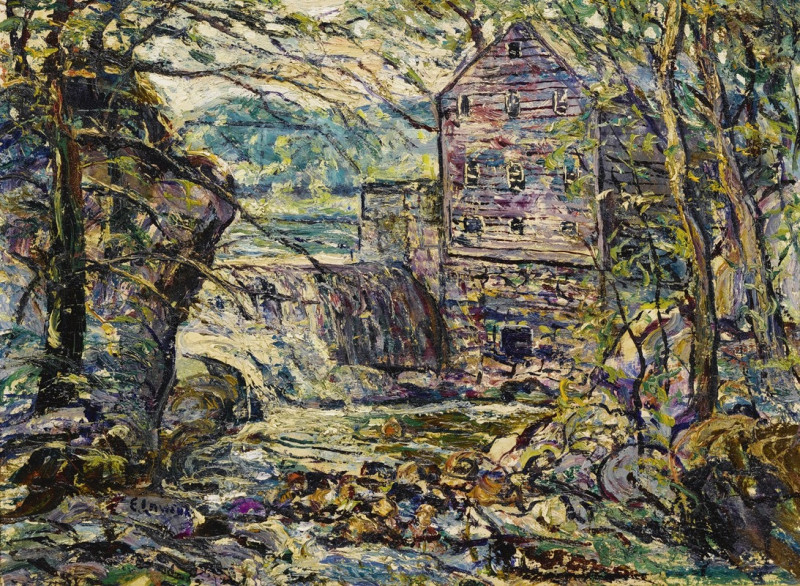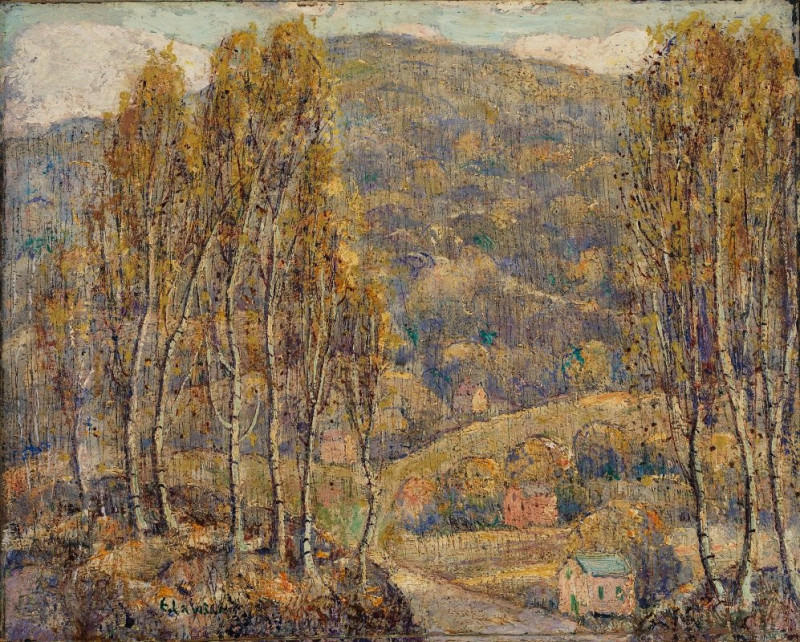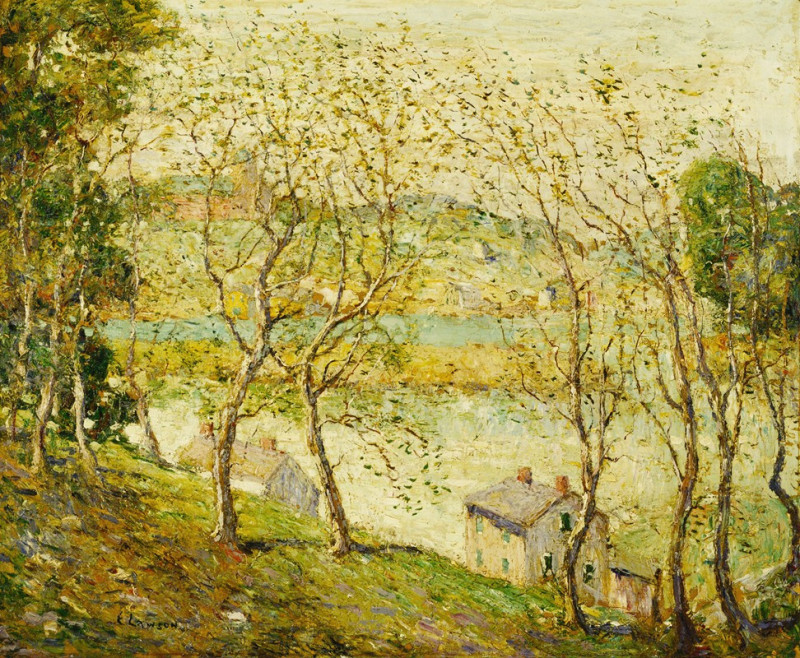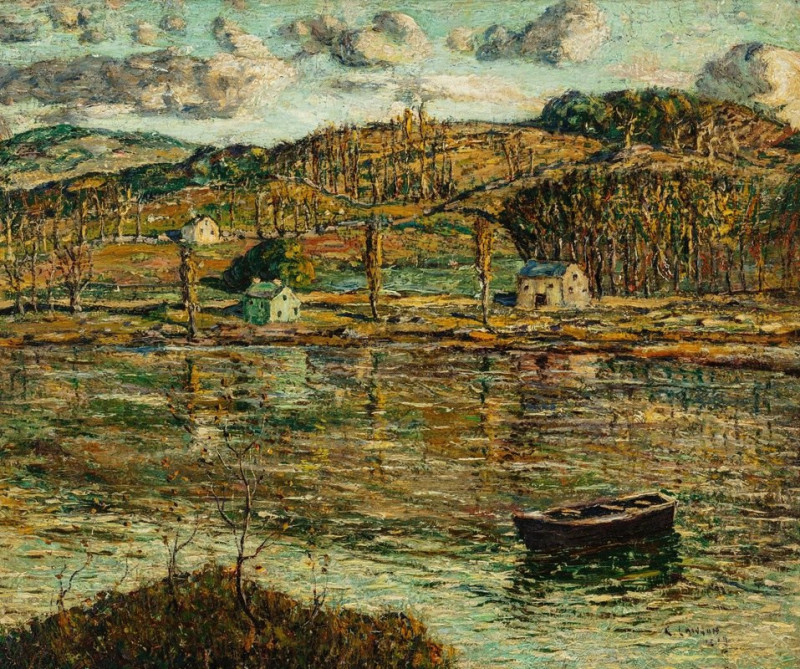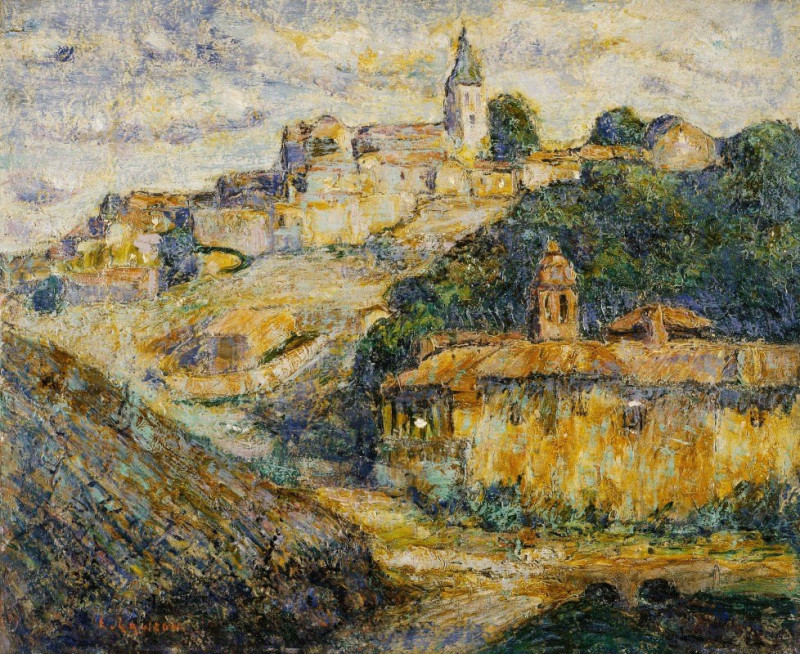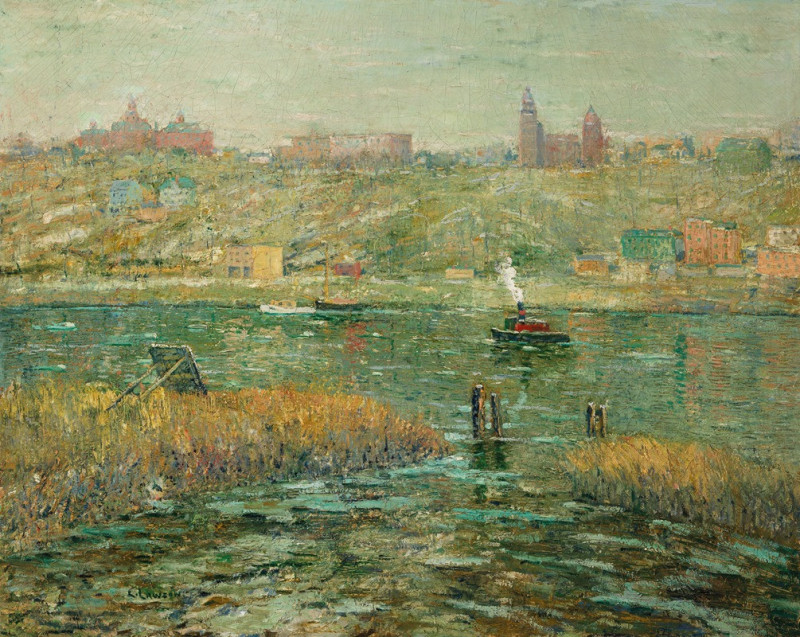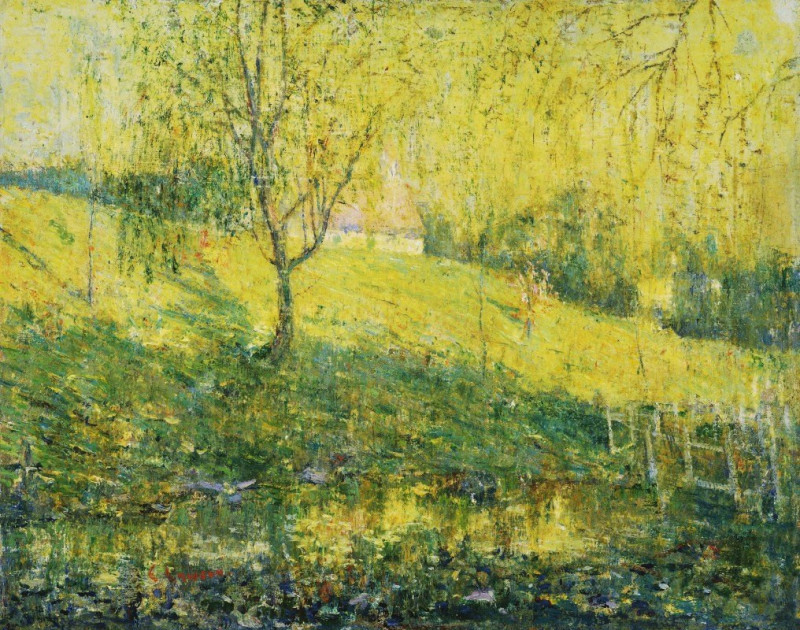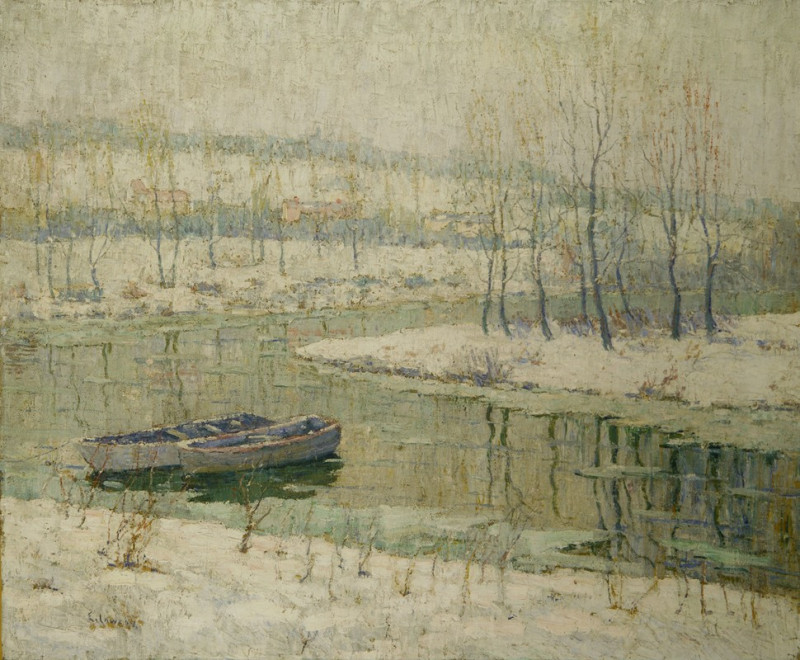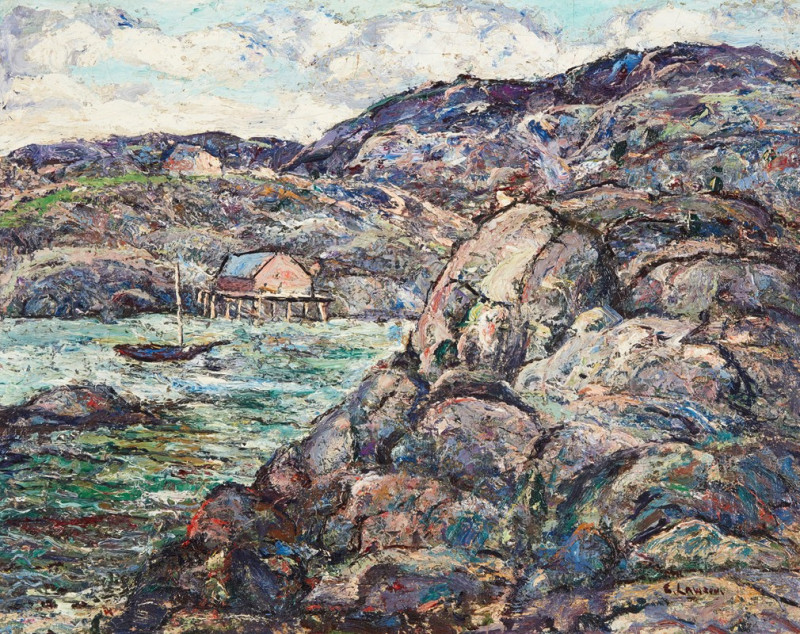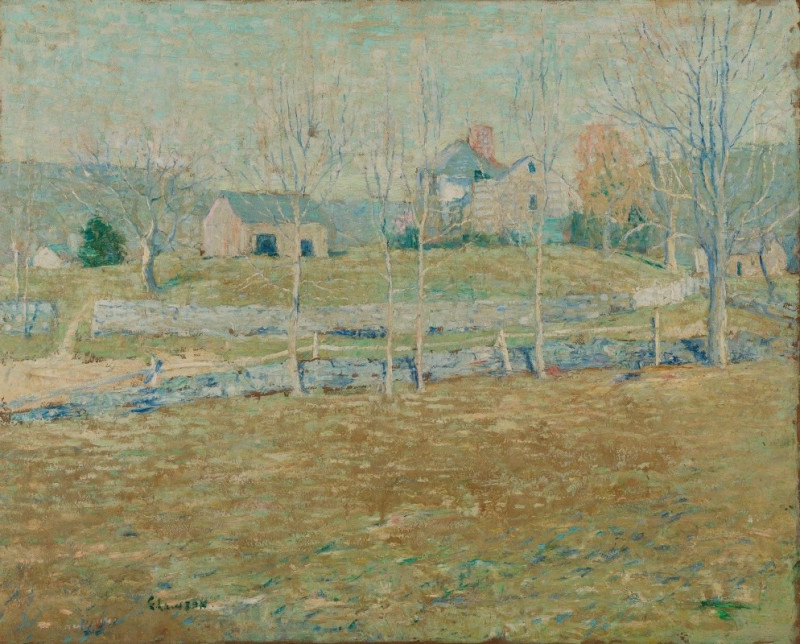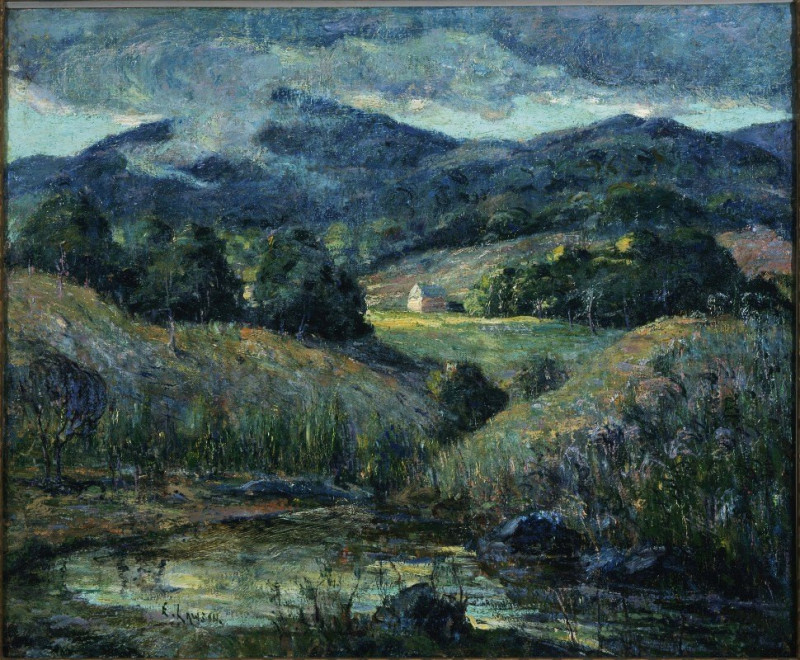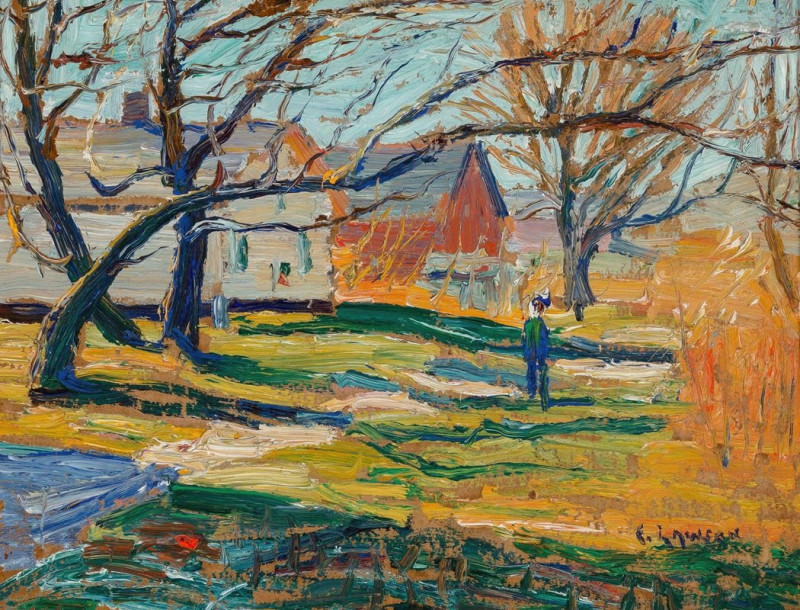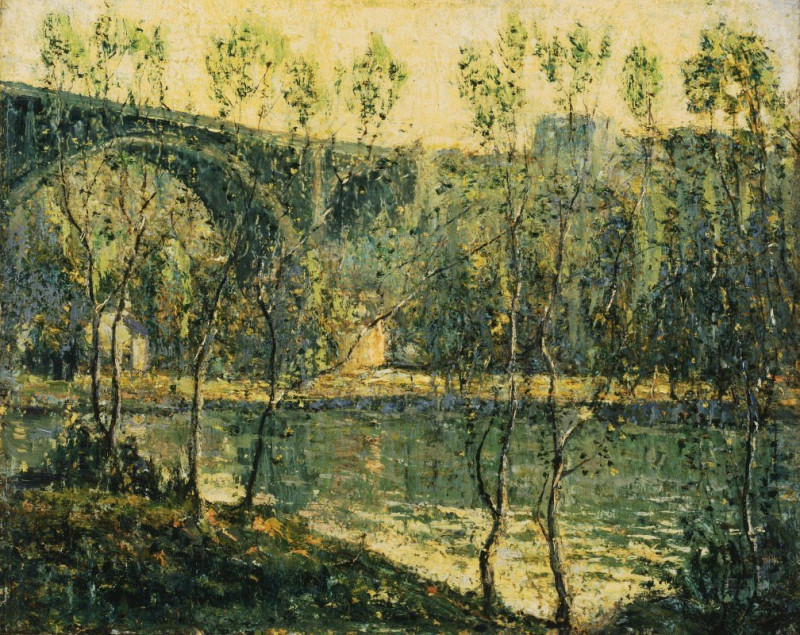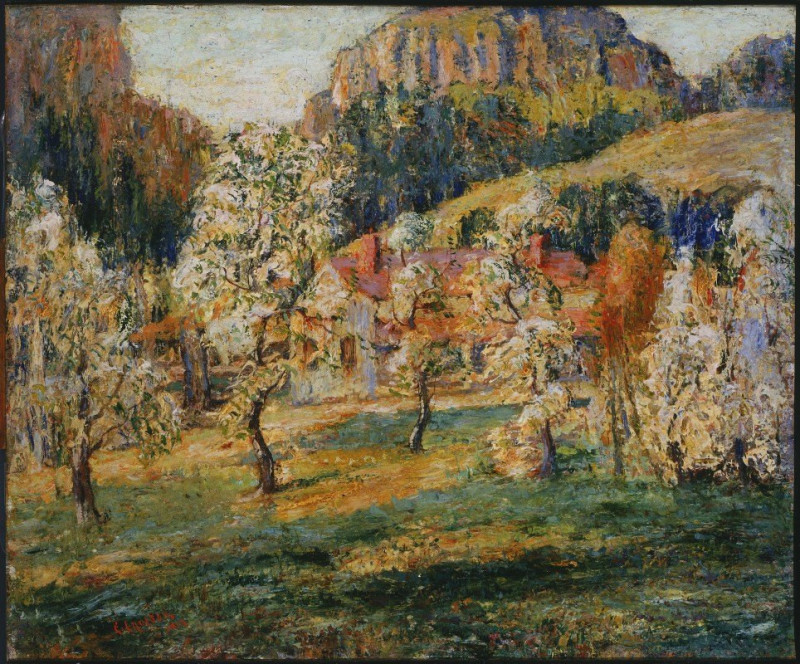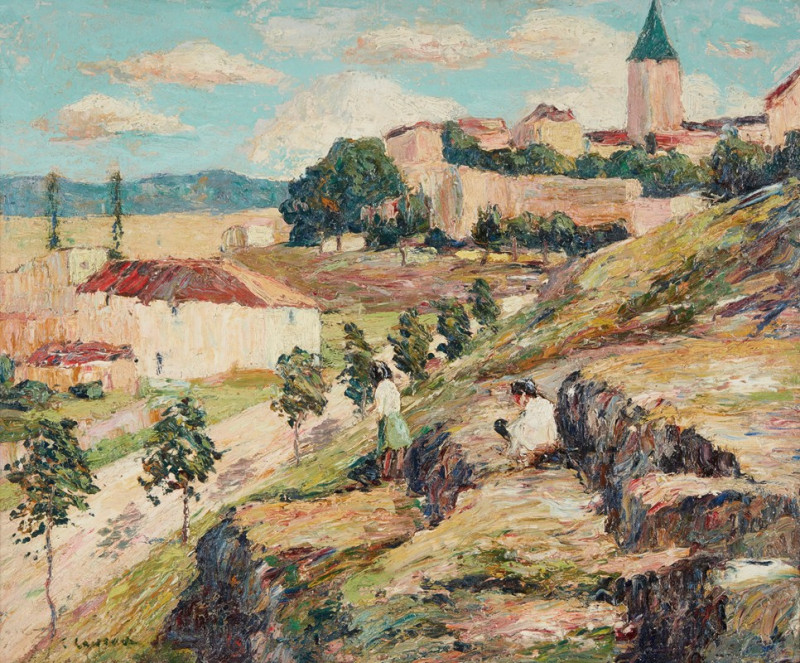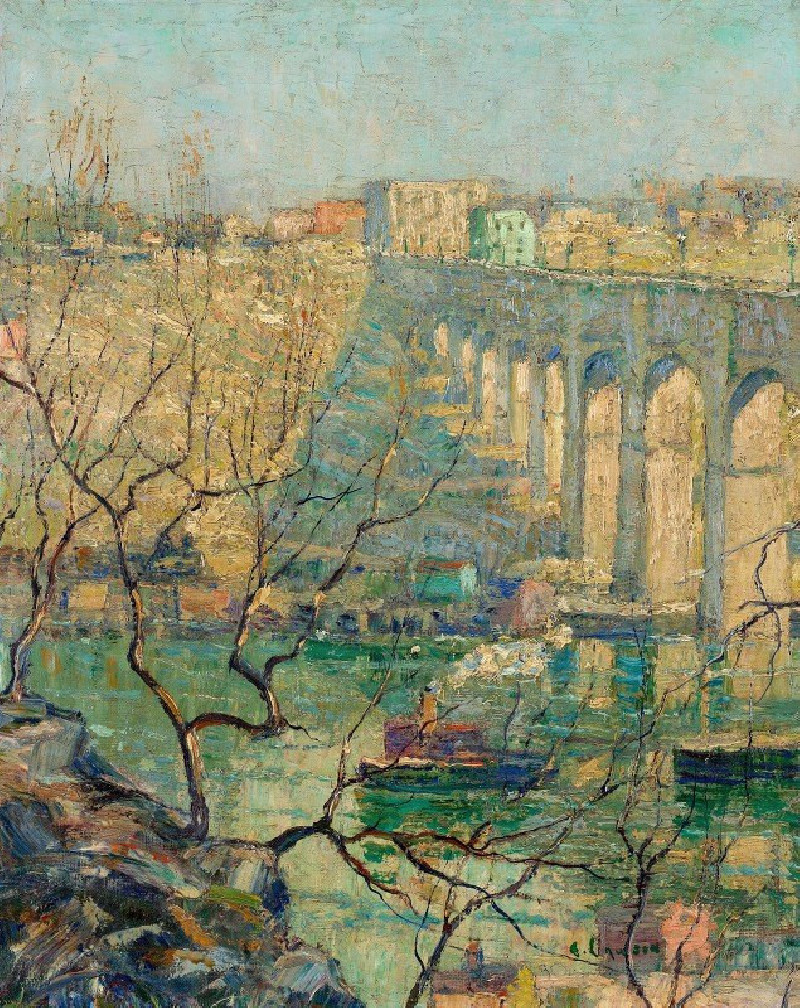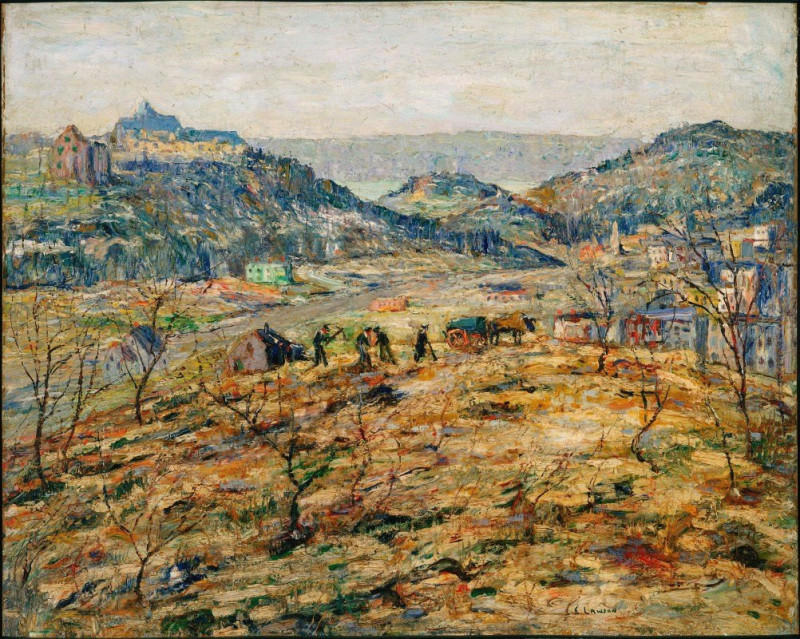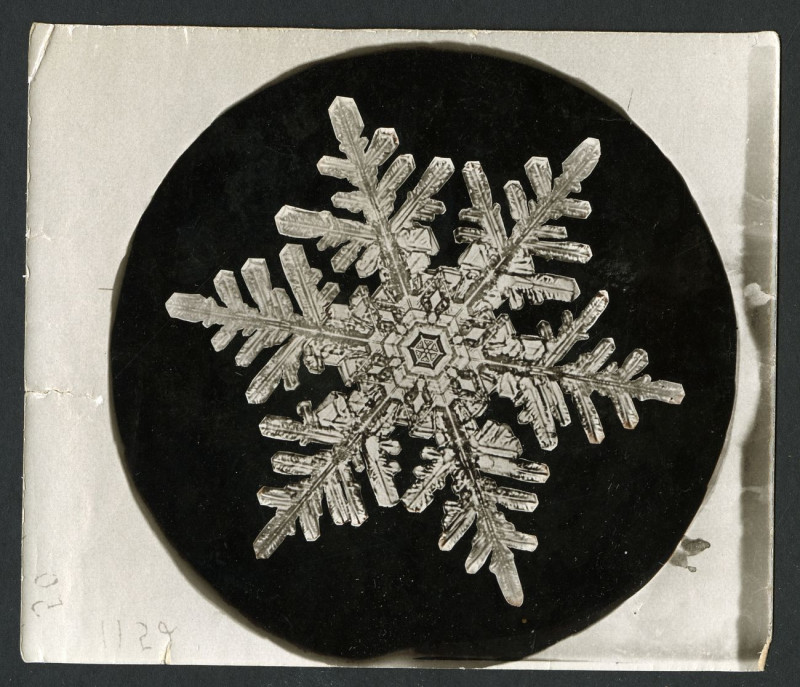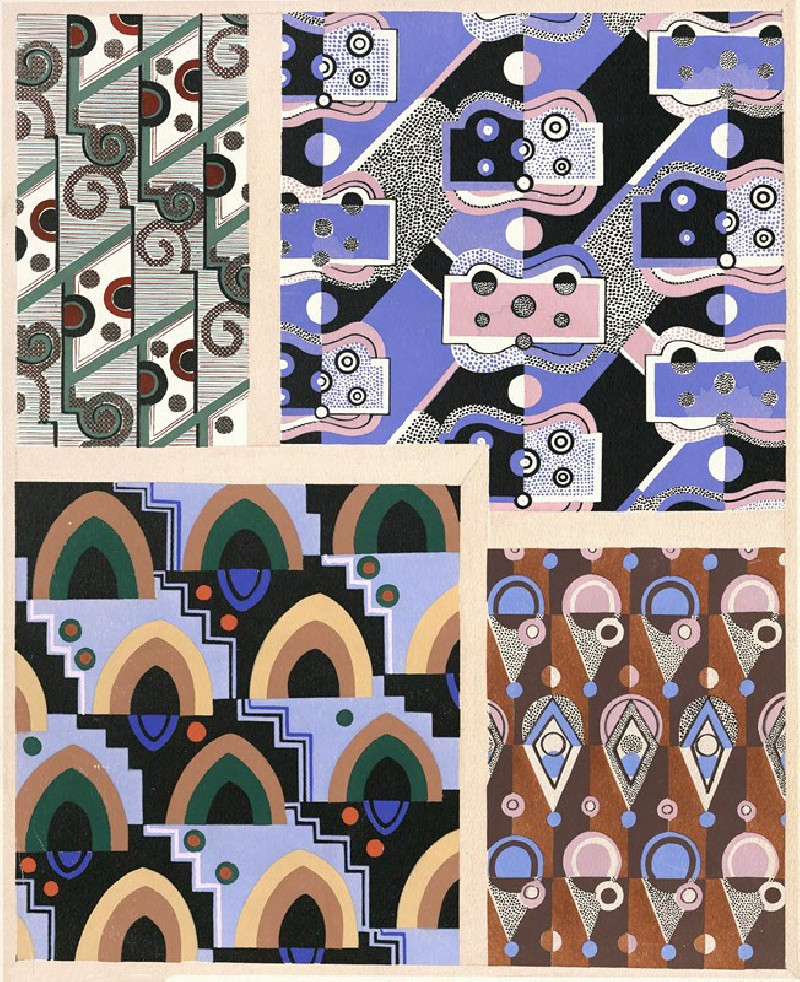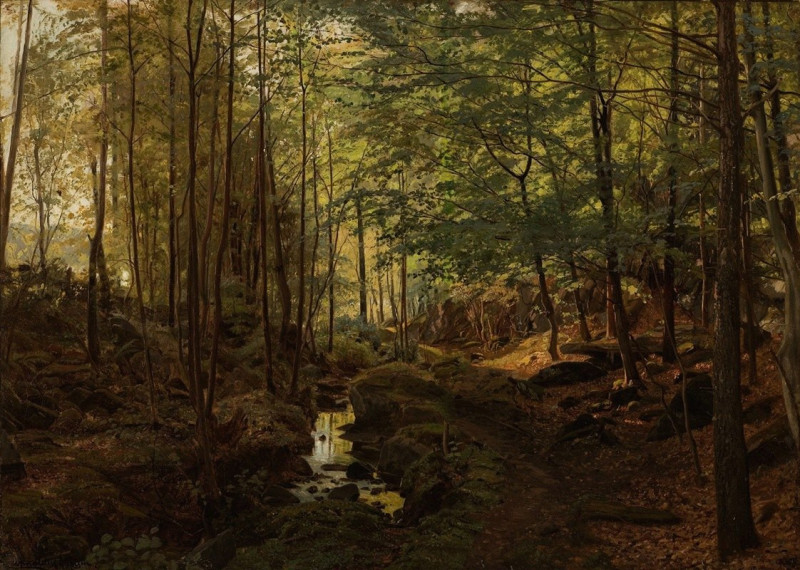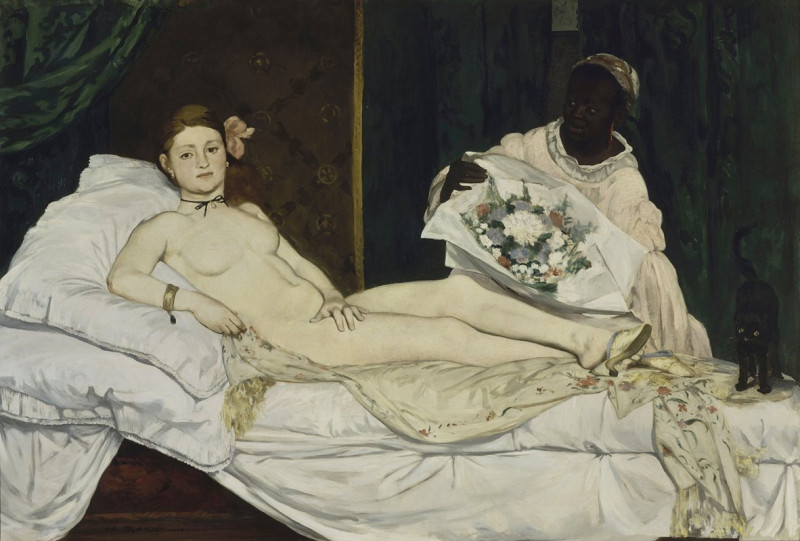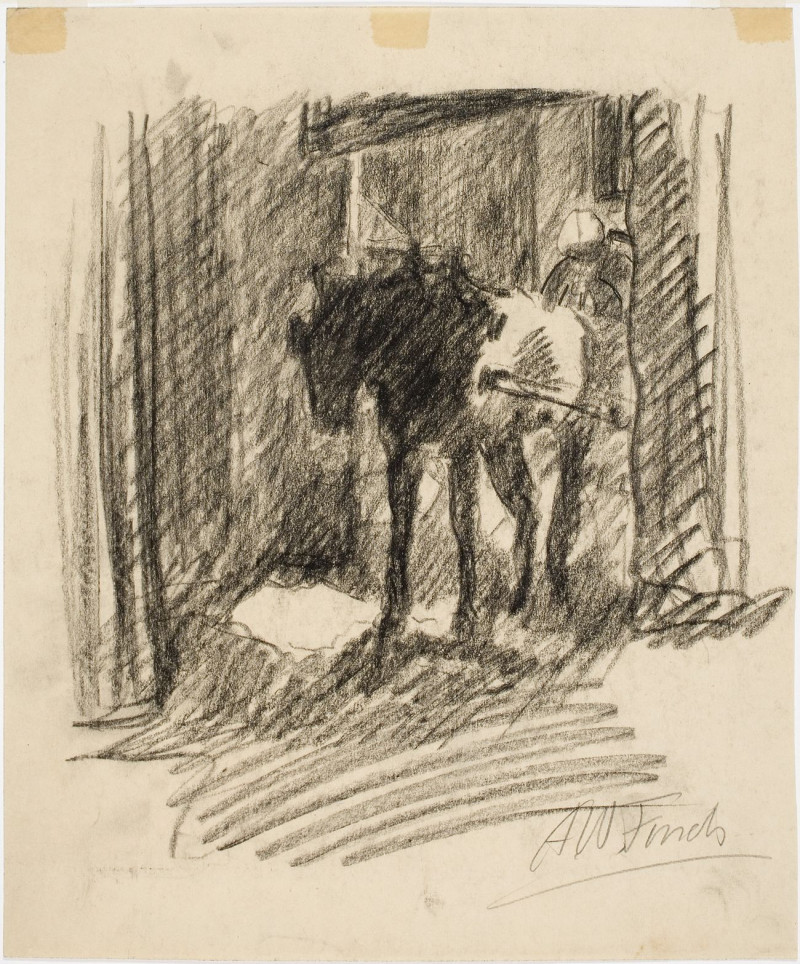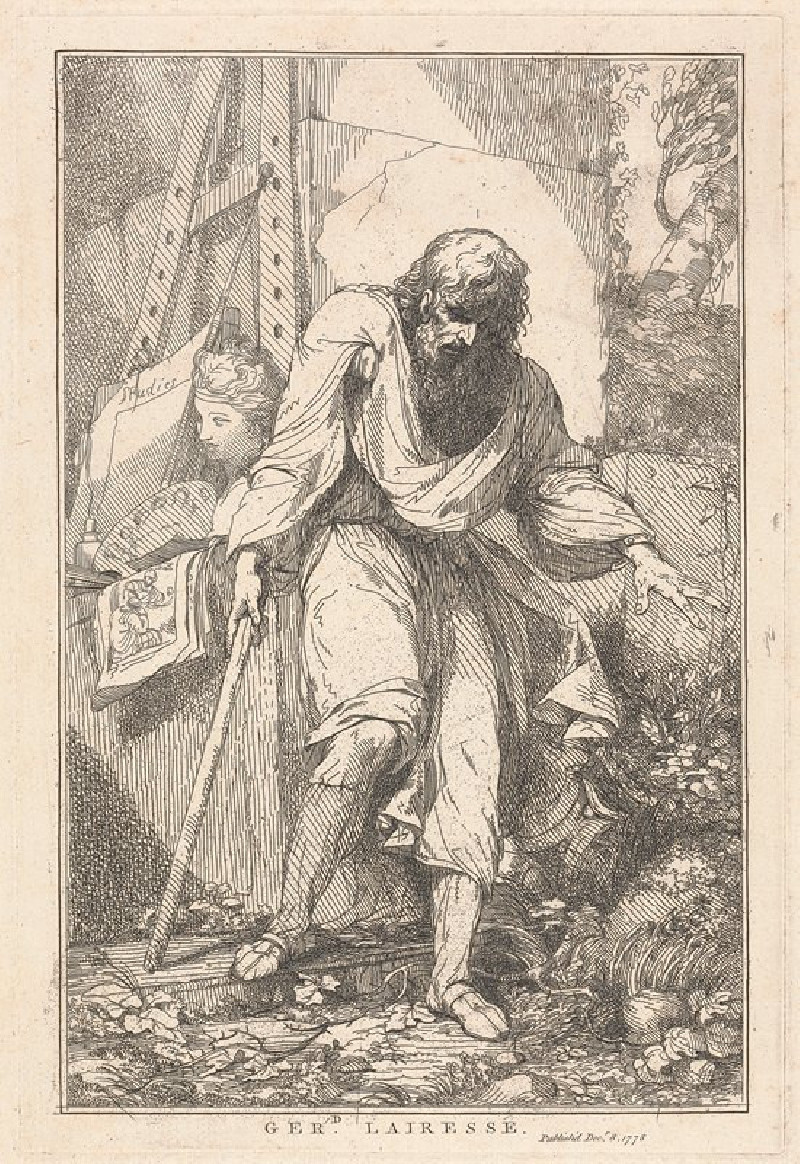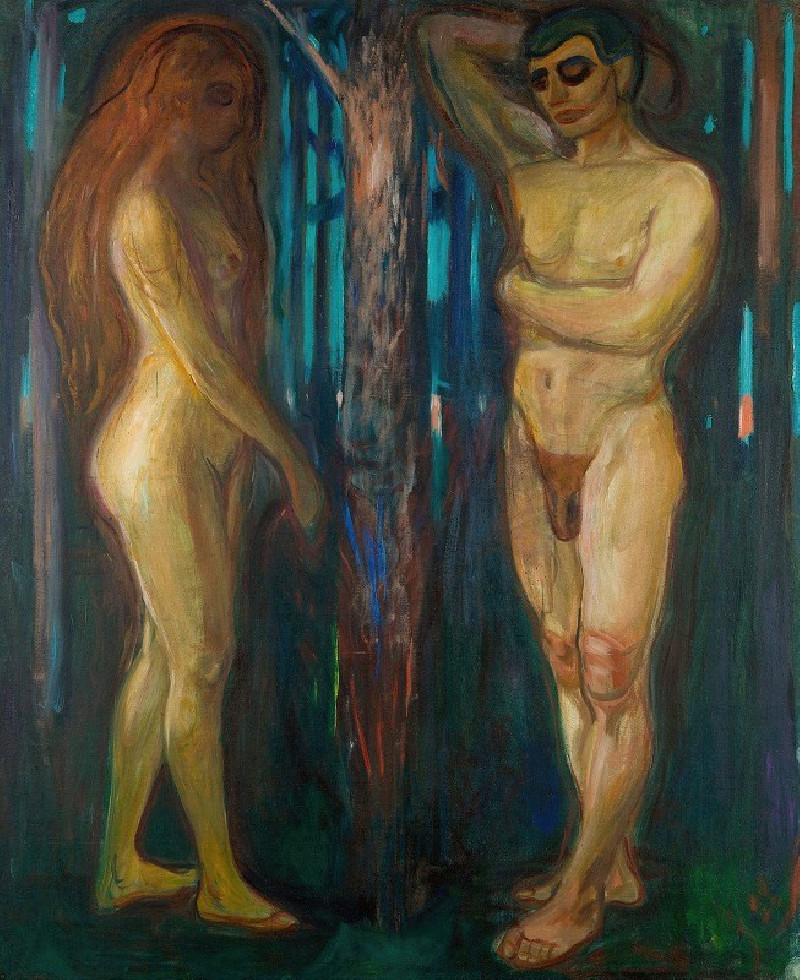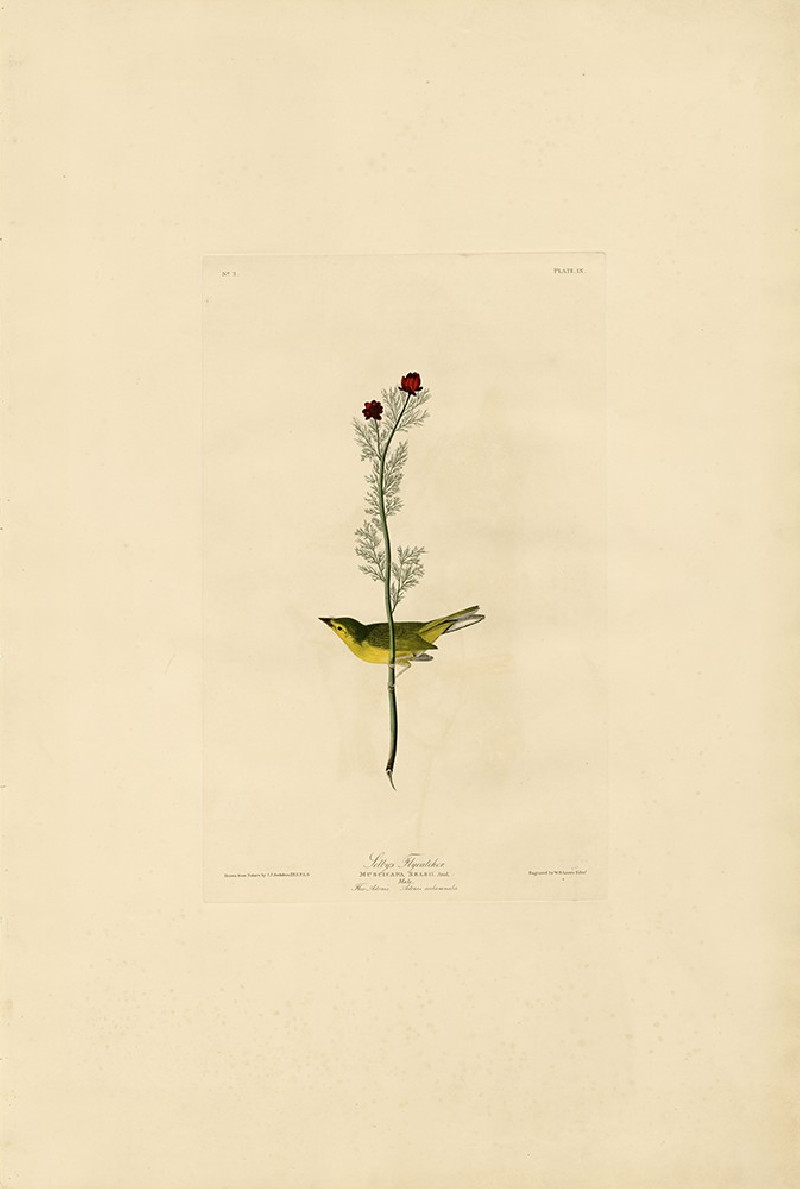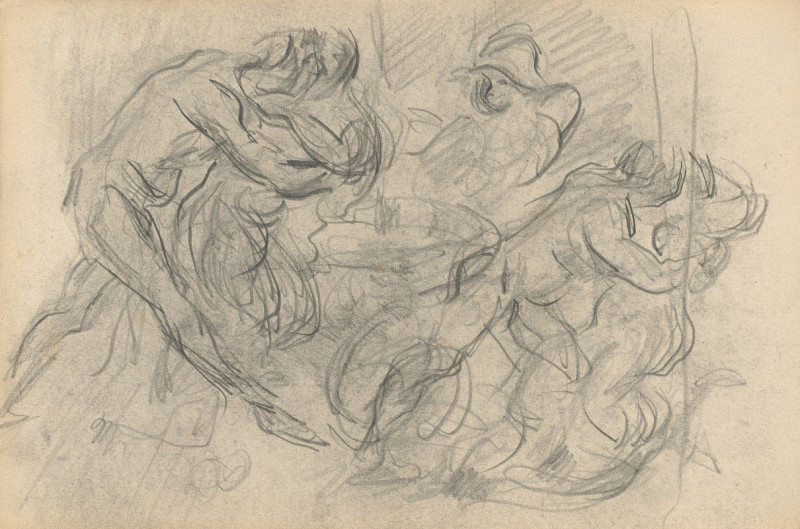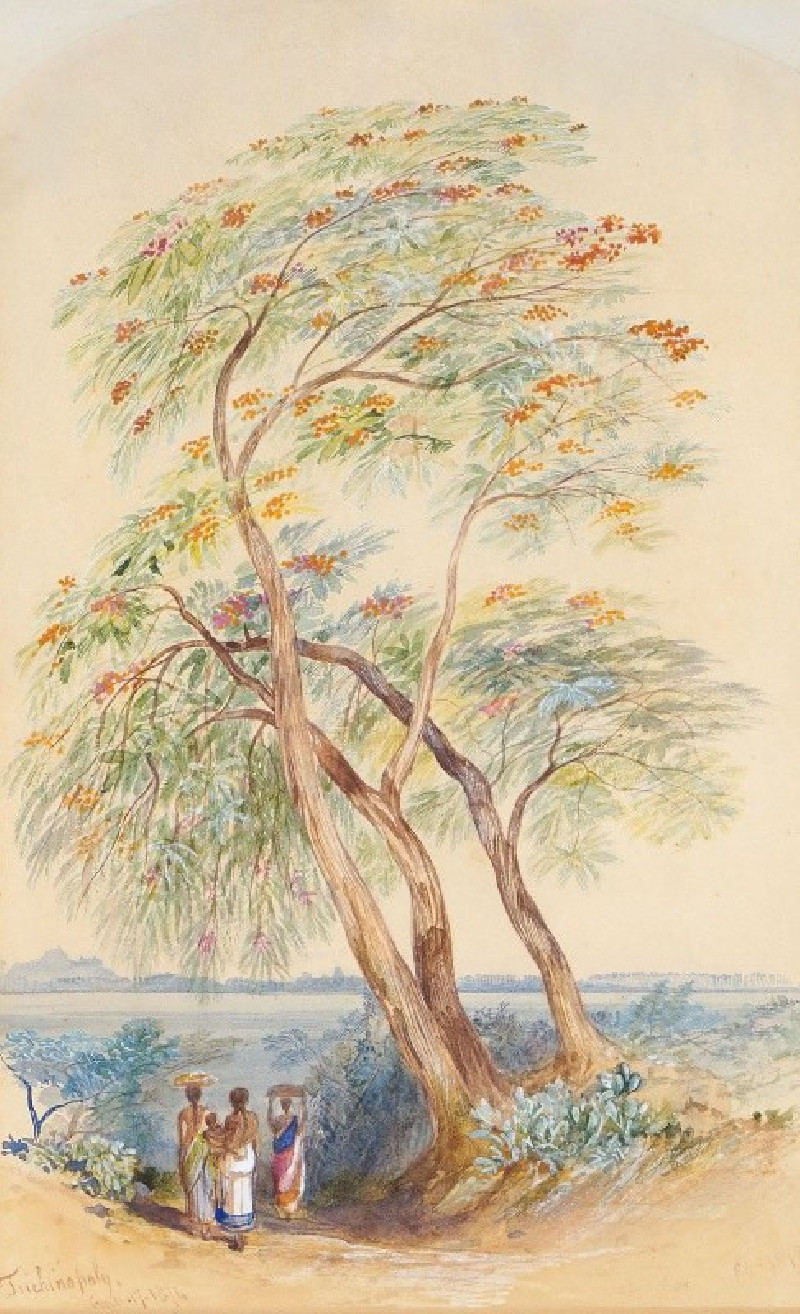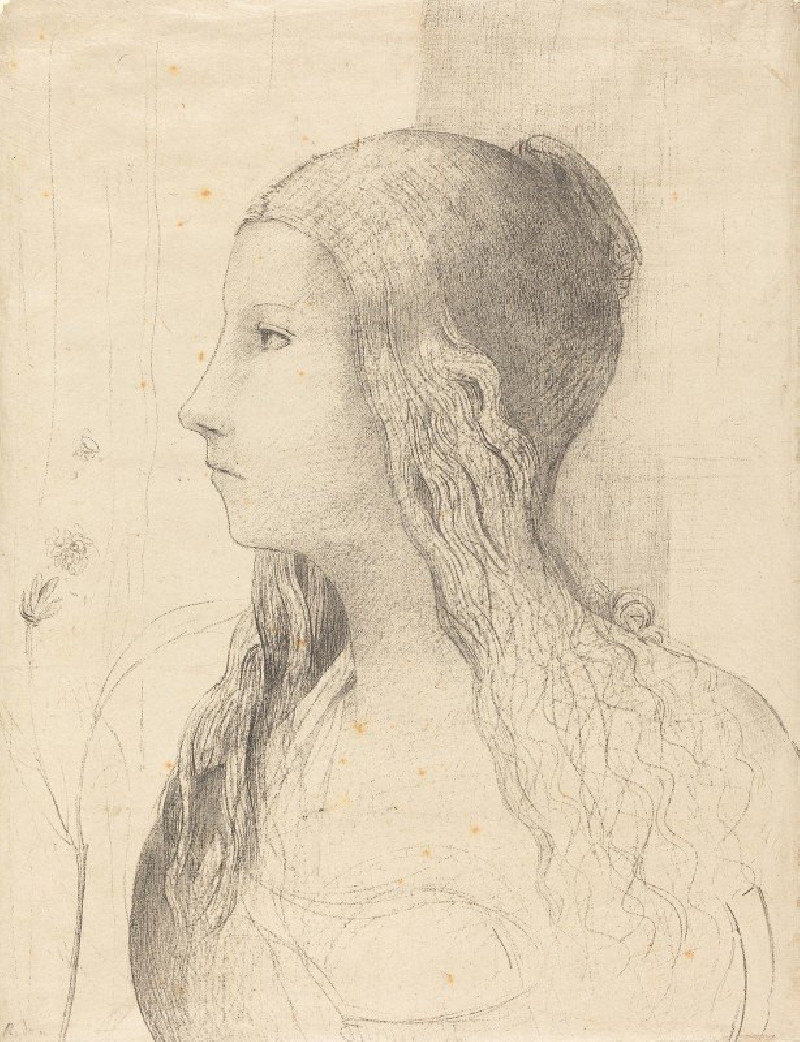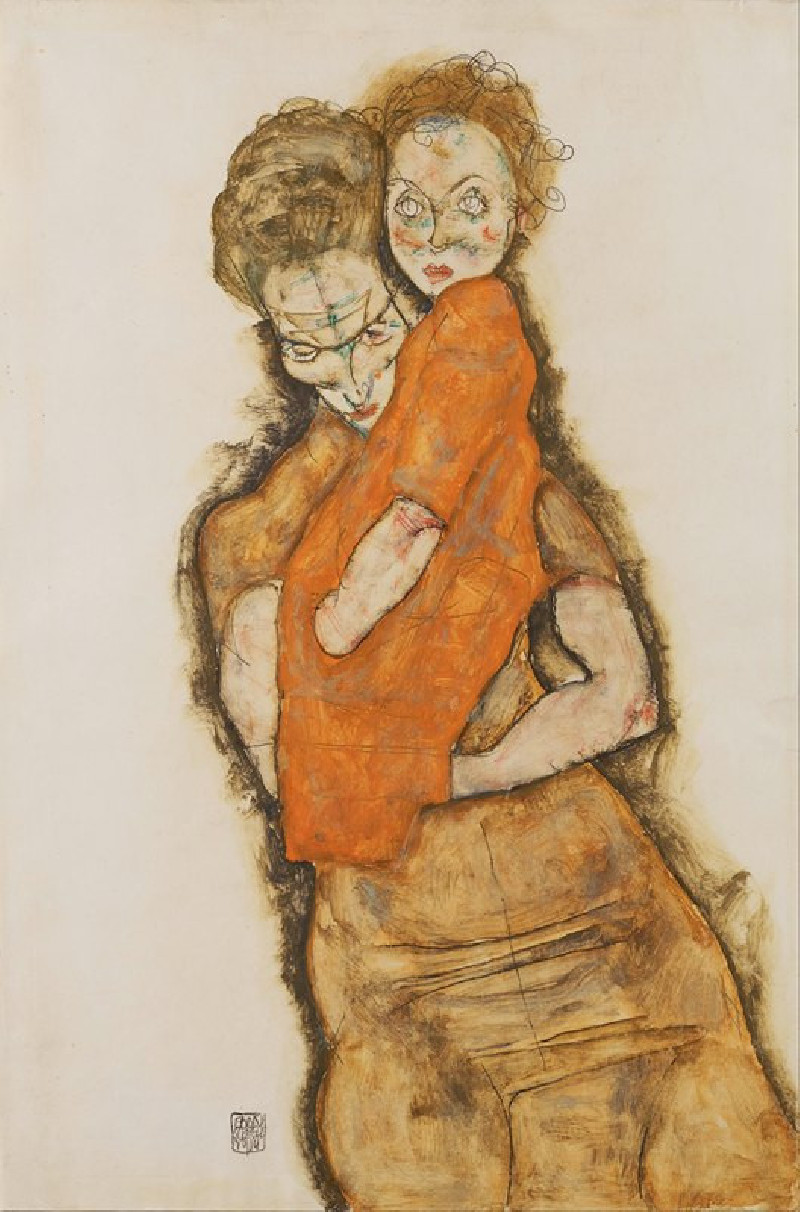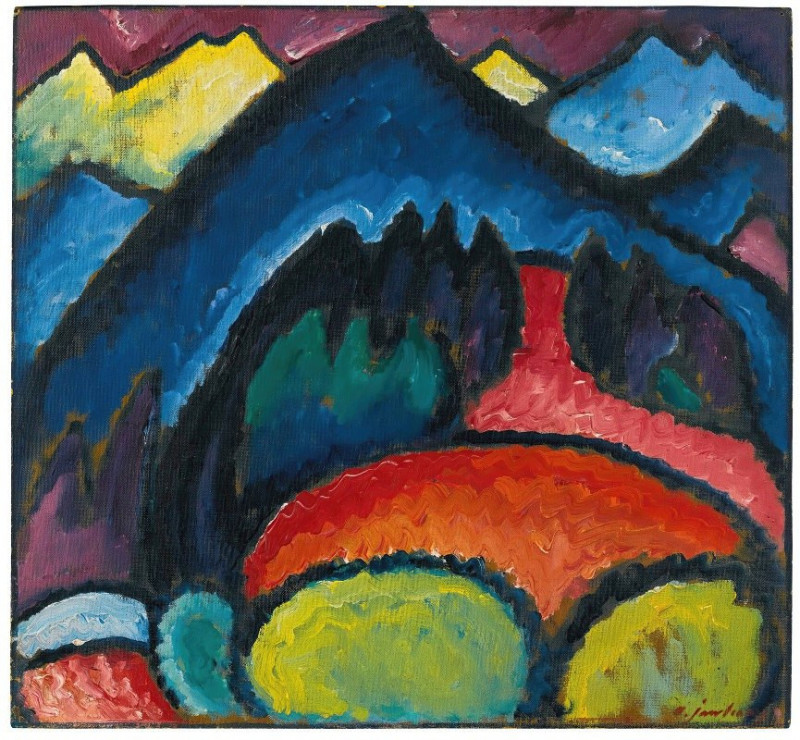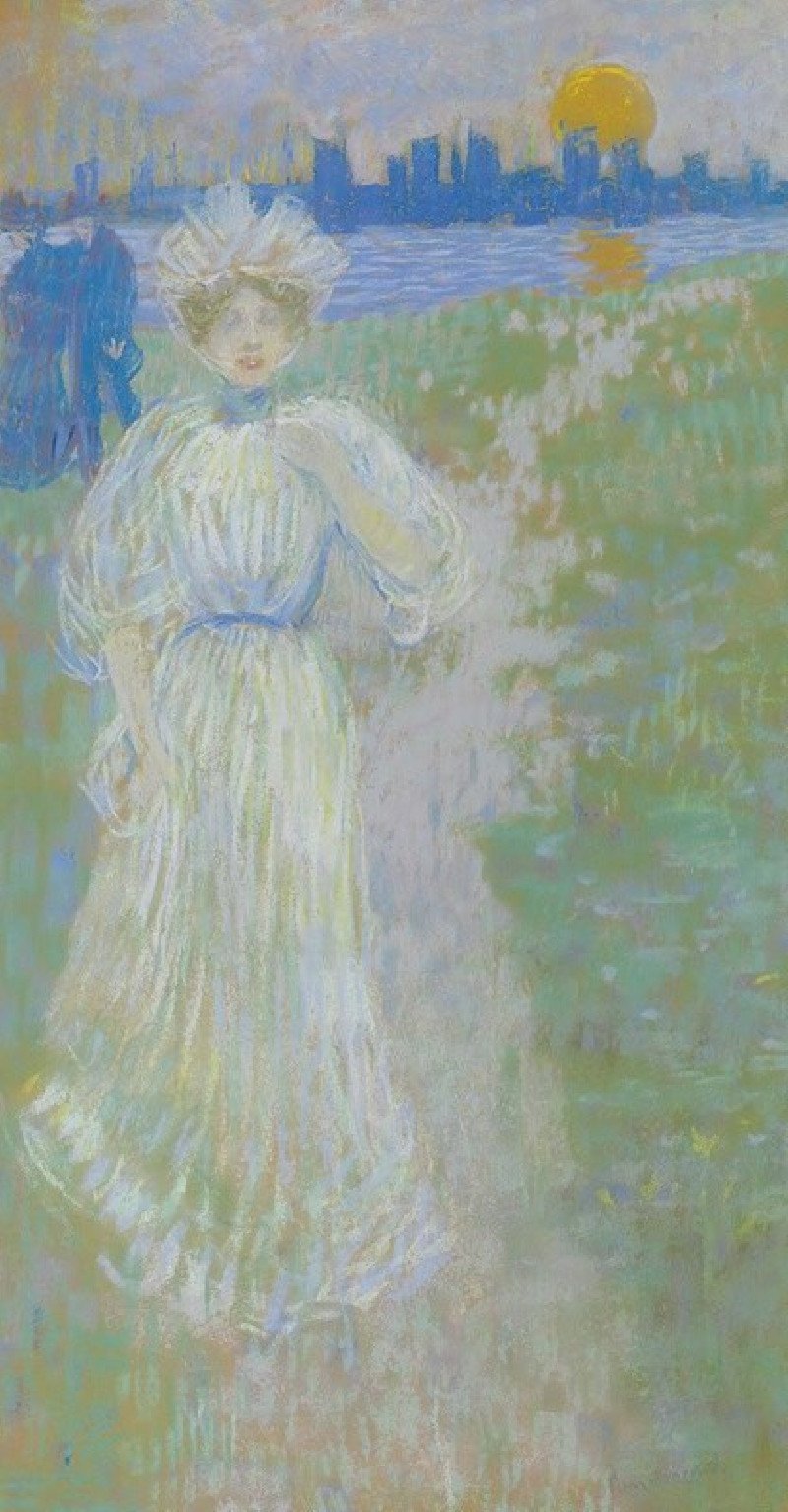High Bridge, Early Moon
Technique: Giclée quality print
Recommended by our customers
More about this artwork
"High Bridge, Early Moon" by Ernest Lawson is a masterful impressionistic portrayal capturing the serene and magical ambiance of a seemingly ordinary urban landscape. The painting provides a view of the historical High Bridge, which spans the Harlem River in New York City, connecting the neighborhoods of Washington Heights in Manhattan to the Bronx.Lawson’s technique is characterized by a rich, textured palette that gives depth and vibrancy to the scene. The blending of greens, oranges, and yellows along with the twilight illuminations implies the onset of evening as an early moon rises. Amidst the natural foreground of barren trees and reflective water, the bridge stands out with its succession of arches, each echoing an industrial age blended with the natural world.The soft, dappled brushwork creates an ethereal quality, inviting viewers to experience a moment of tranquility in the midst of urban life. "High Bridge, Early Moon" not only showcases Lawson's skilled use of color and form but also reflects the blend of natural beauty and human achievement in an ever-evolving cityscape.
Delivery
Returns
Ernest Lawson (March 22, 1873 – December 18, 1939) was a Canadian-American painter and exhibited his work at the Canadian Art Club and as a member of the American group The Eight, artists who formed a loose association in 1908 to protest the narrowness of taste and restrictive exhibition policies of the conservative, powerful National Academy of Design. Though Lawson was primarily a landscape painter, he also painted a small number of realistic urban scenes. His painting style is heavily influenced by the art of John Henry Twachtman, J. Alden Weir, and Alfred Sisley. Though considered a Canadian-American Impressionist, Lawson falls stylistically between Impressionism and realism.

